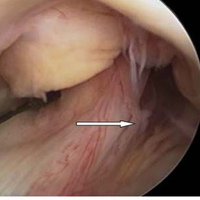Menisco-ligamentous injuries of knee joint: Can ultrasonography serve as an effective screening modality?

Submitted: 7 March 2021
Accepted: 15 July 2021
Published: 29 July 2021
Accepted: 15 July 2021
Abstract Views: 2873
PDF: 259
HTML: 108
HTML: 108
Publisher's note
All claims expressed in this article are solely those of the authors and do not necessarily represent those of their affiliated organizations, or those of the publisher, the editors and the reviewers. Any product that may be evaluated in this article or claim that may be made by its manufacturer is not guaranteed or endorsed by the publisher.
All claims expressed in this article are solely those of the authors and do not necessarily represent those of their affiliated organizations, or those of the publisher, the editors and the reviewers. Any product that may be evaluated in this article or claim that may be made by its manufacturer is not guaranteed or endorsed by the publisher.

 https://doi.org/10.4081/hls.2021.9731
https://doi.org/10.4081/hls.2021.9731



